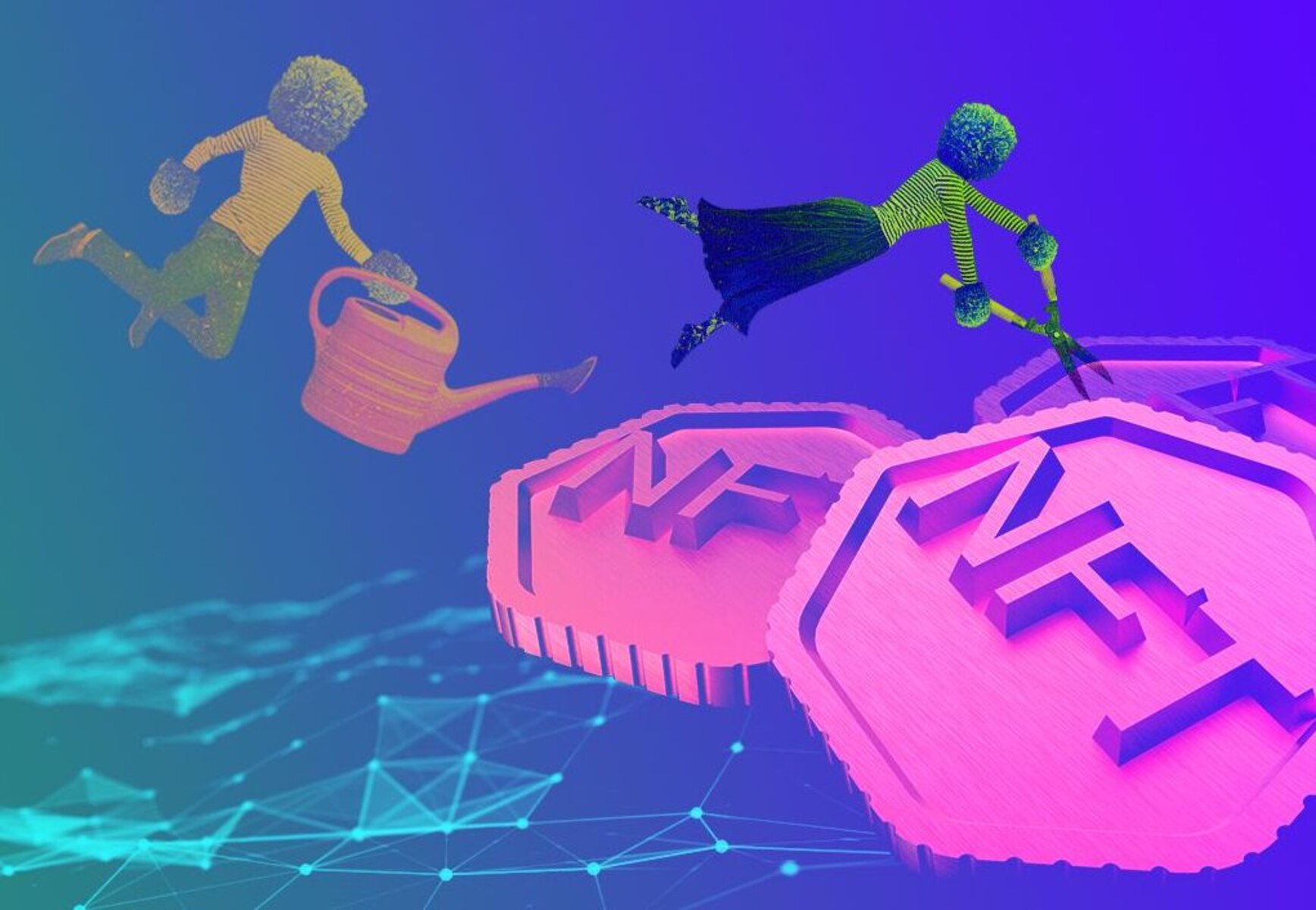Introduction
Sustainability has become an increasingly important issue in recent years as businesses and individuals alike recognize the need to protect the environment and promote social responsibility. One emerging technology that has the potential to support sustainability efforts is blockchain. In this article, we will explore how blockchain can be utilized to address and enhance sustainability initiatives.
Blockchain, often associated with cryptocurrencies like Bitcoin, is a decentralized and transparent digital ledger that records transactions across multiple computers. It ensures immutability, security, and trust without the need for intermediaries, such as banks or governments. While initially used for financial applications, the scope of blockchain technology has expanded to various industries, including supply chain management, healthcare, and energy.
The connection between blockchain and sustainability lies in the technology’s ability to bring transparency, accountability, and efficiency to complex systems. By leveraging its characteristics, blockchain can help optimize resource allocation, trace product origins, enable peer-to-peer energy trading, and stimulate collaboration among stakeholders.
In the following sections, we will delve into the intricacies of blockchain technology and explore the benefits, use cases, and challenges associated with its implementation in sustainability initiatives. Understanding the potential of blockchain in this context will pave the way for more efficient and effective environmental and social impact strategies.
What is blockchain?
Blockchain is a decentralized and transparent digital ledger that records transactions across multiple computers. It is often associated with cryptocurrencies like Bitcoin, but the technology itself has a wide range of applications beyond financial transactions. At its core, blockchain is a distributed database that securely stores transactional data in a chronological and immutable manner.
Unlike traditional centralized databases, blockchain operates in a peer-to-peer network, where every participant in the network has a copy of the entire ledger. This distributed nature ensures the integrity and security of the data, as any attempts to alter or tamper with information would require control of a majority of the network’s computing power.
Each transaction or piece of data added to the blockchain is packaged into a block and linked to the previous block through a cryptographic hash function. This linking creates a chain of blocks, hence the term “blockchain”. Once a block is added to the chain, it becomes permanent and cannot be modified retroactively, providing an audit trail and ensuring the immutability of the data.
One of the key characteristics of blockchain is transparency. As all participants in the network have access to the same information, it fosters trust and accountability. Any changes or updates to the blockchain are recorded and visible to all stakeholders in real-time, reducing the potential for fraud or manipulation.
Additionally, blockchain employs strong cryptographic algorithms to ensure the security and privacy of the data. Each transaction is verified and validated by multiple participants, known as nodes, before being added to the ledger. This consensus mechanism, often referred to as “proof of work” or “proof of stake”, makes it extremely difficult for malicious actors to alter the data or introduce fraudulent transactions.
In summary, blockchain is a decentralized and transparent digital ledger that provides secure, immutable, and trustless storage for transactions and data. By leveraging its unique attributes, blockchain has the potential to revolutionize various industries, from finance and supply chain management to healthcare and energy, and play a significant role in advancing sustainability efforts.
How does blockchain work?
To understand how blockchain works, it is essential to grasp the concept of decentralized consensus. In a traditional centralized system, such as a bank or government, a trusted intermediary is responsible for verifying and validating transactions. However, blockchain eliminates the need for intermediaries by relying on a distributed network of computers called nodes.
When a transaction is initiated on the blockchain, it is broadcasted to the network and grouped with other pending transactions into a block. Before a block can be added to the chain, it must go through a validation process. This process involves solving a complex mathematical problem known as proof of work or proof of stake, depending on the specific blockchain protocol.
Once a node successfully solves the problem and validates the block of transactions, it is added to the blockchain and becomes a permanent part of the ledger. The validated block is then propagated to other nodes in the network, and they update their copies of the blockchain accordingly.
Another crucial aspect of blockchain is the use of cryptographic hashing functions. Each block contains a unique identifier, known as a hash, which is generated by applying a cryptographic algorithm to the data within the block. The hash is like a digital fingerprint, and any changes to the data within the block will result in a different hash value.
The cryptographic hashes are responsible for creating the inherent security of the blockchain. Once a block is added to the chain, it is computationally infeasible to modify or tamper with the data, as this would require altering the hash of the block and all subsequent blocks in the chain. This immutability ensures the integrity and trustworthiness of the data stored on the blockchain.
Furthermore, the distributed nature of the blockchain ensures the resiliency and availability of the system. As each participant in the network has a copy of the entire ledger, there is no central point of failure. If one node goes down or is compromised, the other nodes in the network can maintain the integrity of the blockchain.
In summary, blockchain works through decentralized consensus, cryptographic hashing functions, and distributed networks. By combining these elements, blockchain enables secure, transparent, and immutable transactions, without the need for intermediaries. This innovative technology has the potential to transform various industries and contribute to the advancement of sustainability efforts globally.
Blockchain and Sustainability: The Connection
Blockchain technology has the potential to revolutionize sustainability efforts across various domains including environmental conservation, supply chain management, renewable energy, and social impact initiatives. The key connection between blockchain and sustainability lies in the technology’s ability to bring transparency, accountability, and efficiency to complex systems, ultimately driving positive environmental and social change.
One of the main challenges in achieving sustainability goals is the lack of transparency in supply chains. Blockchain can address this challenge by creating a tamper-proof record of every transaction and process involved in the production and distribution of goods. This transparency enables businesses and consumers to trace the origin of products, ensuring ethical sourcing, fair trade, and the elimination of environmentally harmful practices such as illegal deforestation or child labor.
Additionally, blockchain can optimize resource allocation by enabling decentralized peer-to-peer energy trading. With the integration of smart contracts, individuals and businesses can directly buy and sell renewable energy without the need for intermediaries, creating a more efficient and sustainable energy ecosystem. This peer-to-peer energy trading also allows for the integration of decentralized renewable energy sources, reducing reliance on fossil fuels and promoting a greener energy landscape.
Furthermore, blockchain technology can facilitate the implementation of carbon offset initiatives by accurately tracking and verifying carbon credits. Traditionally, the carbon market has faced challenges with fraud and double-counting of carbon credits. By utilizing blockchain, the entire lifecycle of carbon credits, from generation to retirement, can be transparently recorded, ensuring credibility and trust in the carbon offset process.
Blockchain’s decentralized and immutable nature also makes it valuable in disaster response and humanitarian aid efforts. In times of crisis, blockchain can be used to securely and efficiently distribute aid and resources to affected areas, eliminating corruption and ensuring that resources reach those most in need. Additionally, blockchain-based digital identities can help ensure that individuals’ rights and entitlements are protected and enable targeted assistance to vulnerable populations.
Overall, the connection between blockchain and sustainability lies in the technology’s ability to enhance transparency, accountability, and efficiency in various sectors. By harnessing blockchain’s capabilities, businesses, governments, and individuals can work together to create more sustainable and responsible practices, accelerating progress towards a greener and more socially just future.
Benefits of Using Blockchain for Sustainability Efforts
The utilization of blockchain technology in sustainability efforts offers numerous benefits that can drive positive environmental and social change. From enhanced transparency to increased efficiency, blockchain brings a range of advantages to the table.
One of the primary benefits of using blockchain for sustainability is increased transparency. By recording transactions and activities on a decentralized ledger, blockchain enables stakeholders to access real-time, immutable data. This transparency promotes accountability and trust, as it becomes more difficult for fraudulent or unethical practices to go unnoticed. Whether it’s tracking supply chain processes or verifying the origin of sustainable products, blockchain provides a level of visibility that fosters responsible and ethical practices.
Another key advantage of blockchain is improved efficiency in processes and resource allocation. By automating tasks through smart contracts, transactions can be executed faster, eliminating the need for intermediaries and reducing administrative costs. For example, in renewable energy markets, blockchain-based peer-to-peer energy trading can streamline energy distribution, making it more efficient and cost-effective. This increased efficiency empowers businesses and individuals to make sustainable choices without compromising on convenience or affordability.
Blockchain technology also enhances data integrity and security. With its decentralized network, blockchain encrypts and stores data across multiple nodes, making it challenging for hackers to manipulate or alter information. This feature is particularly crucial in sustainability efforts where accurate data is paramount. Whether it’s verifying carbon credits or ensuring the accuracy of environmental impact assessments, blockchain provides a secure and tamper-evident platform for data management and verification.
Furthermore, the use of blockchain can promote collaboration and trust among stakeholders. By providing a common platform with transparent and immutable data, blockchain removes the need for intermediaries and facilitates direct peer-to-peer interactions. This fosters greater collaboration between businesses, consumers, governments, and NGOs, allowing them to work together more effectively towards achieving sustainability goals. Blockchain-based solutions also ensure that all participants have access to the same information, minimizing information gaps and fostering trust and cooperation.
Lastly, blockchain technology offers scalability and interoperability, making it adaptable to a wide range of sustainability initiatives. With the ability to integrate with existing systems and technologies, blockchain can seamlessly collaborate with other emerging technologies like the Internet of Things (IoT), Artificial Intelligence (AI), and Big Data analytics. This interoperability enables the development of comprehensive and interconnected solutions that can address complex sustainability challenges effectively.
In summary, the benefits of using blockchain for sustainability efforts are numerous. From increased transparency and efficiency to enhanced data security and collaboration, blockchain empowers stakeholders to make informed decisions and take meaningful actions towards building a more sustainable and socially responsible future.
Use Cases of Blockchain in Supporting Sustainability
Blockchain has the potential to revolutionize sustainability efforts across various industries, providing innovative solutions to pressing environmental and social challenges. Here are some key use cases where blockchain can support sustainability initiatives:
1. Supply Chain Transparency: Blockchain can enable end-to-end traceability in supply chains, ensuring transparency and accountability. By recording every transaction and movement of goods on the blockchain, stakeholders can verify the authenticity of products, ensure fair trade, and prevent environmental abuses and human rights violations.
2. Renewable Energy Trading: With blockchain, individuals and businesses can engage in peer-to-peer energy trading, creating a more efficient and decentralized energy market. Blockchain-based platforms enable producers and consumers to trade renewable energy directly, promoting the use of green energy, reducing carbon emissions, and democratizing access to clean power.
3. Sustainable Agriculture: Blockchain can enhance transparency and trust in the agriculture sector by enabling farmers to record their practices, such as crop rotation, pesticide use, and irrigation methods, on the blockchain. This data can then be verified, providing consumers with information about the sustainability and ethical practices employed in the production of their food.
4. Carbon Offset and Emissions Tracking: Blockchain-based systems can accurately track and verify carbon credits, ensuring transparency and integrity in carbon offset initiatives. By digitizing and securely recording carbon credits on the blockchain, organizations can mitigate greenhouse gas emissions more effectively and create a robust marketplace for carbon trading.
5. Waste Management: Blockchain can optimize waste management processes by creating a transparent and trusted system for tracking waste from generation to disposal. This can help identify areas of improvement in recycling and waste reduction efforts, encourage proper disposal practices, and incentivize sustainable waste management practices.
6. Sustainable Finance: Blockchain technology can improve the efficiency and transparency of sustainable finance initiatives. By using smart contracts and tokenization, blockchain enables the creation and exchange of impact investment instruments, such as green bonds and social impact bonds, promoting investment in environmentally and socially responsible projects.
7. Humanitarian Aid and Philanthropy: Blockchain can enhance the transparency and accountability of donations and aid distribution in humanitarian and philanthropic initiatives. By recording transactions and tracking the delivery of resources on the blockchain, organizations can ensure that funds and goods reach their intended recipients, eliminating corruption, and promoting effective humanitarian assistance.
These are just a few examples of how blockchain can be applied to support sustainability efforts. The versatility and transformative nature of blockchain technology make it a powerful tool for creating positive environmental and social impact across various industries, paving the way for a more sustainable future.
Challenges and Limitations of Blockchain in Sustainability Efforts
While blockchain technology holds significant potential for supporting sustainability efforts, it is not without its challenges and limitations. Understanding these obstacles is crucial to effectively harnessing the benefits of blockchain and overcoming its limitations. Here are some key challenges faced in integrating blockchain into sustainability initiatives:
1. Scalability: Blockchain networks, particularly public blockchains like Bitcoin and Ethereum, can currently handle only a limited number of transactions per second. This scalability issue makes it challenging to apply blockchain to large-scale sustainability initiatives that require high transaction throughput.
2. Energy Consumption: Blockchain networks that rely on consensus mechanisms like proof-of-work require significant computational resources and energy consumption. This high energy requirement contradicts the goals of sustainability efforts, particularly in the case of cryptocurrencies like Bitcoin, which have been criticized for their environmental impact.
3. Regulatory and Legal Challenges: The regulatory landscape surrounding blockchain technology is still evolving. Compliance with existing regulations, particularly in highly regulated industries like finance and healthcare, can pose obstacles to implementing blockchain solutions. Additionally, legal and jurisdictional challenges related to data privacy and cross-border transactions need to be addressed to fully integrate blockchain into sustainability initiatives.
4. Lack of Interoperability: Blockchain operates using various protocols and standards, making interoperability between different blockchain networks and legacy systems a challenge. This lack of interoperability can hinder the seamless integration of blockchain into existing sustainability processes and platforms.
5. User Adoption and Accessibility: Blockchain technology is still relatively new and complex for the average user. Building user-friendly interfaces and systems that mask the technical complexities of blockchain is essential for widespread adoption. Additionally, ensuring accessibility for individuals and organizations in resource-constrained areas is crucial to promote inclusivity in sustainability efforts.
6. Trust and Governance: While blockchain is designed to be trustless, its implementation still requires trust and cooperation among stakeholders. Establishing governance models, consensus mechanisms, and trust frameworks that align with sustainability goals can be challenging and require collaboration across industries and regulatory bodies.
7. Data Accuracy and Verification: While blockchain provides immutability and data integrity, ensuring the accuracy and verifiability of data that is stored and recorded on the blockchain is still a challenge. Garbage-in, garbage-out scenarios can occur if incorrect or inaccurate data is inputted into the system, undermining the reliability of information used for sustainability efforts.
Overcoming these challenges requires collaboration, innovation, and ongoing research and development efforts. Adapting blockchain technology to address the unique needs and complexities of sustainability efforts will require a multidisciplinary approach and continuous improvement in scalability, energy efficiency, interoperability, user experience, governance models, and data verifiability.
Overcoming Challenges: Solutions and Best Practices
While blockchain technology presents challenges in its integration into sustainability efforts, there are several solutions and best practices emerging to address these obstacles. By adopting these approaches, stakeholders can maximize the benefits of blockchain and overcome its limitations. Here are some strategies to overcome the challenges associated with blockchain integration in sustainability initiatives:
1. Scalability Solutions: To address scalability limitations, developers are exploring alternative consensus mechanisms such as proof-of-stake and delegated proof-of-stake, which reduce energy consumption and increase transaction throughput. Additionally, layer 2 solutions like sidechains and off-chain scaling protocols are being developed to optimize blockchain performance and scalability.
2. Energy Efficiency Measures: Innovative approaches like green blockchains, which utilize renewable energy sources for mining and transaction processing, can help reduce the environmental impact of blockchain networks. Additionally, the adoption of energy-efficient consensus mechanisms and the use of energy-saving techniques, such as sharding, can help improve the energy efficiency of blockchain technology.
3. Regulatory Frameworks and Standards: Collaboration between regulatory bodies, industry stakeholders, and blockchain developers is essential to establish clear regulatory frameworks and standards that address legal and compliance challenges. This will provide a supportive environment for integrating blockchain into sustainability initiatives while ensuring data privacy and consumer protection.
4. Interoperability Protocols: Standardization efforts, such as the development of interoperability protocols like Hyperledger, are underway to enable seamless integration between different blockchain networks and legacy systems. Interoperability solutions will facilitate data sharing and collaboration, improving the compatibility of blockchain with existing sustainability processes.
5. User-Friendly Interfaces: User adoption can be facilitated by developing intuitive and user-friendly interfaces that hide the technical complexities of blockchain. This will make blockchain solutions more accessible and encourage wider adoption by individuals and organizations participating in sustainability efforts.
6. Collaborative Governance Models: Establishing collaborative governance models, such as consortium blockchains and multi-stakeholder partnerships, can ensure that blockchain implementations align with sustainability goals. By involving relevant stakeholders in decision-making processes and establishing transparent governance frameworks, trust and cooperation can be fostered.
7. Data Verification and Validation Mechanisms: Implementing mechanisms to ensure the accuracy and integrity of data recorded on the blockchain is crucial. Solutions like oracle networks and trusted third-party validators can play a role in verifying and validating data, reducing the risk of incorrect or inaccurate information being stored on the blockchain.
By following these best practices and actively addressing the challenges associated with blockchain integration, sustainability efforts can leverage the full potential of blockchain technology. Collaboration, ongoing research and development, and a commitment to continuous improvement will enable stakeholders to overcome barriers and realize the benefits of blockchain in driving positive environmental and social change.
Conclusion
Blockchain technology presents immense opportunities for supporting sustainability efforts across various industries. By leveraging its characteristics of transparency, efficiency, and accountability, blockchain has the potential to revolutionize supply chain management, renewable energy trading, carbon offset initiatives, and more. However, there are challenges to overcome, including scalability, energy consumption, regulatory compliance, interoperability, user adoption, trust, and data accuracy.
To address these challenges, stakeholders must collaborate and innovate. Solutions such as alternative consensus mechanisms, energy-efficient practices, regulatory frameworks, interoperability protocols, user-friendly interfaces, collaborative governance models, and data verification mechanisms are emerging to overcome these obstacles. By adopting these best practices, sustainability initiatives can fully harness the potential of blockchain technology, driving positive environmental and social impact.
It is crucial for all stakeholders, including businesses, governments, organizations, and individuals, to recognize the transformative potential of blockchain in advancing sustainability goals. By embracing blockchain, we can enhance transparency, traceability, and responsible practices throughout supply chains, promote renewable energy adoption, optimize resource allocation, and improve humanitarian aid and philanthropy. In doing so, we can create a more sustainable and equitable future for all.
Despite the challenges, the combination of blockchain technology with sustainability efforts holds enormous promise. As the technology continues to evolve and overcome limitations, it will become increasingly integral in implementing effective and impactful sustainability practices. By leveraging blockchain’s potential, we can address environmental and social challenges with greater efficiency, transparency, and collaboration, paving the way for a more sustainable and prosperous world for generations to come.

























